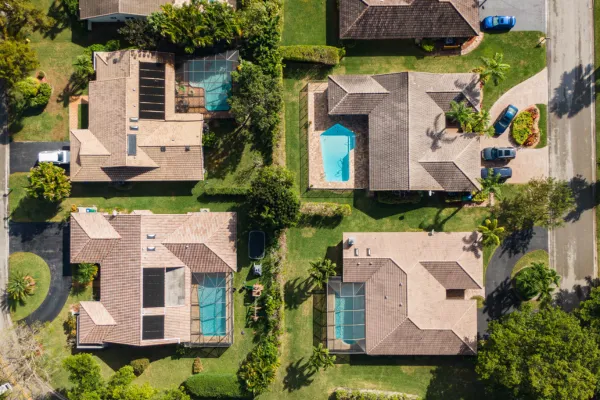
Moving to South Florida in 2025: The Ultimate Guide
Thinking about moving to South Florida in 2025? Whether you’re relocating for a new job, a change of lifestyle, retirement, or simply seeking fresh scenery, it’s a significant decision. You might be wondering: Where should I live? Is it affordable? What’s the best fit for my family? This guide covers the most frequently asked questions I’ve encountered over the years from clients, comments, and consultations, to help you navigate your move effectively.
Where Should You Live in South Florida?
South Florida is comprised of three main counties: Palm Beach, Broward, and Miami-Dade. These house the major metropolitan areas of Miami, Fort Lauderdale, and West Palm Beach. When choosing where to live, consider your lifestyle priorities: Will you be commuting? Do you need proximity to certain schools? Are you looking for a beachside home or a quiet suburban community?
There’s a place for every preference, from established neighborhoods with HOAs to non-HOA suburban pockets or even quieter areas near the Everglades. You might also consider living centrally between all three major metros for easy access to each. For a detailed breakdown, I’ve covered specific neighborhood lifestyles in this video.
Understanding Affordability
Affordability is subjective, and South Florida offers a diverse housing market. You might find neighborhoods with $10 million homes adjacent to areas with $800,000 or $500,000 homes. The median home price currently hovers around $490,000, but expectations versus reality often differ. For instance, if you envision a $500,000 home in a prime location like East Fort Lauderdale (east of Federal Highway), you might need to adjust your budget closer to $700,000 or more. Generally, the further west you go from the coast, the more affordable properties become.
If you’re budgeting around $500,000, you can still find decent homes, but they may be in suburban areas, perhaps needing some updates. Keep in mind that the house you imagine at this price point may realistically cost more, especially in desirable neighborhoods near the water.
HOA vs. Non-HOA Communities
A common question is whether to opt for an HOA or a non-HOA community. HOAs, or Homeowners Associations, act like a mini-government for your neighborhood, offering amenities and enforcing community standards. These are more prevalent in newer suburban areas like Parkland, Weston, Coral Springs and a majority of western Palm Beach County. Non-HOA options exist, but they are less common in the suburbs and tend to be in older neighborhoods or rural areas. Each option has its pros and cons, depending on your preference for community regulations and amenities.
New Construction vs. Resale Homes
Deciding between a new build or a resale home depends on your preferences and budget. While South Florida is largely developed, newer construction is still available, primarily in master-planned communities with amenities like pools and clubhouses. These communities offer benefits such as modern appliances and potentially better mortgage rates through in-house lenders. However, they can feel “cookie-cutter” and may lack mature landscaping initially.
Resale homes, on the other hand, are often more centrally located and reflect the region’s architectural diversity. Despite concerns about storm resilience, most homes here are built with concrete blocks to withstand hurricanes.
Weather and Flooding Concerns
Hurricanes and flooding are valid concerns for anyone moving to South Florida. While major hurricanes are relatively infrequent, they remain a possibility, especially during the June-to-November hurricane season. Even heavy rainstorms can cause temporary street flooding due to the region’s flat terrain and drainage issues. If you plan to live near the water, factor in flood insurance costs.
Job Market and Employment
South Florida’s job market has grown significantly, attracting both large corporations and small businesses. Industries like tourism, hospitality, healthcare, and finance thrive here. There are three international airports, major cruise ports, and numerous hotels and restaurants, providing ample employment opportunities. Additionally, cities like Miami and West Palm Beach are becoming hubs for tech and finance, with Brickell earning the nickname "Wall Street of the South."
However, it’s advisable to secure a job before relocating unless you have sufficient savings. Moving without a plan can be risky, especially given the region’s high cost of living. I have seen this happen to too many people and I don't want to see it happen to you!
Schools and Education
If you’re moving with children, schools are likely a top priority. South Florida offers a mix of public, private, and charter schools, with quality varying by zoning. Thorough research and perhaps consultations with locals will help you find the right fit for your family’s educational needs. Just because a school isn't rated as high as you would like does not make it a bad school for your needs.
Moving to South Florida is an exciting venture, but thorough planning is essential to find the right home and lifestyle. We would love to connect with you and help make your move down to Florida as smooth as possible. Reach out via this link or contact us directly at info@livinginfortlauderdalefl.com
Also, feel free to take advantage of our free resources such as our weekly newsletter and relocation guides!
